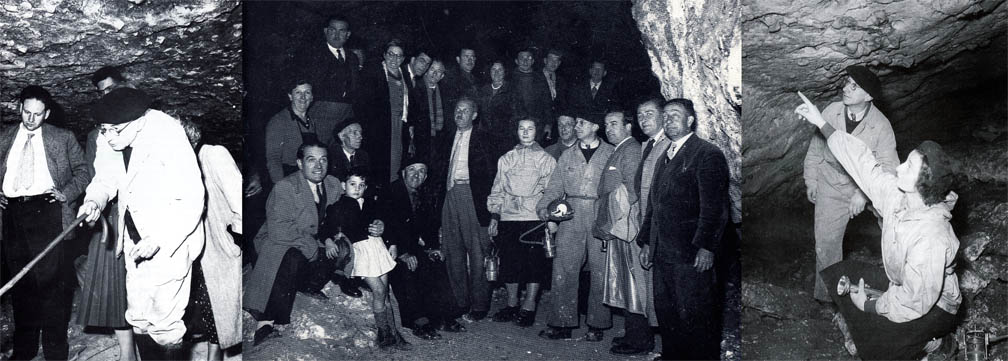|
“ I was indeed fascinated by Bara-Bahau cave; down there we discover
decorated panels which undeniably give us a better insight into the very first phases
in the history of art...”
L'abbé Breuil, le 15 août 1951.
|
April 1951, all the prehistory buffs in the Périgord gathered at Bara-Bahau to greet speleologists Maud and Norbert Casteret.
1st row: M Coste and his daughter Cathy, M Darnige, Colonel Delfau, Séverin Blanc, Maud Casteret, M Beuve, Norbert Casteret, M Mouret and M Gontier.
2nd row: Mme Garrigue, Georges Laville, Mme Blanc, Elie Leymonerie, M Rouzier, Marceau Sourie, Mme Coste and M Boucher.
Formerly known as le Trou de la Cocagne, the entrance to this huge cave had long been a popular picnic spot. |
In 1951 Maud and Raoul Casteret were contacted by the president of the Tourist Office in Le Bugue. They were asked to thoroughly explore every inch of the cave and it was flat on her back that Maud caught a glimpse of the first engravings: a horse and then a cow with fine horns. She discovered sixteen animals in all. |



